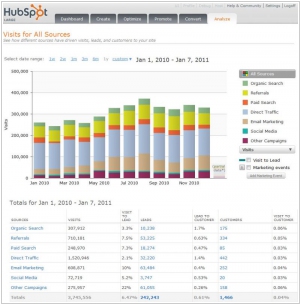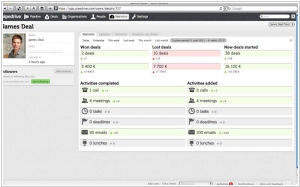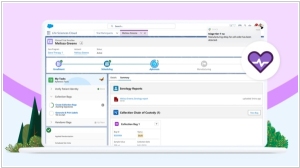HubSpot vs Pipedrive
August 20, 2023 | Author: Sandeep Sharma
HubSpot and Pipedrive are both popular CRM (Customer Relationship Management) software solutions, but they have some key differences in terms of features and target audience.
HubSpot is an all-in-one inbound marketing and sales platform that offers a wide range of tools to help businesses attract, engage, and convert leads. It provides features for email marketing, social media management, lead tracking, sales pipeline management, and customer support. HubSpot focuses on integrating marketing and sales efforts to create a seamless customer experience throughout the entire buyer's journey. It is suitable for businesses of all sizes, but especially for those that prioritize inbound marketing strategies and value a comprehensive suite of marketing and sales tools.
Pipedrive, on the other hand, is a sales-focused CRM software designed specifically for managing sales pipelines and improving sales performance. It offers features for lead management, deal tracking, sales forecasting, and activity scheduling. Pipedrive emphasizes simplicity and ease of use, making it popular among sales teams that value a straightforward and intuitive interface. It is particularly well-suited for small and medium-sized businesses that want a streamlined solution to manage their sales processes.
See also: Top 10 Online CRM software
HubSpot is an all-in-one inbound marketing and sales platform that offers a wide range of tools to help businesses attract, engage, and convert leads. It provides features for email marketing, social media management, lead tracking, sales pipeline management, and customer support. HubSpot focuses on integrating marketing and sales efforts to create a seamless customer experience throughout the entire buyer's journey. It is suitable for businesses of all sizes, but especially for those that prioritize inbound marketing strategies and value a comprehensive suite of marketing and sales tools.
Pipedrive, on the other hand, is a sales-focused CRM software designed specifically for managing sales pipelines and improving sales performance. It offers features for lead management, deal tracking, sales forecasting, and activity scheduling. Pipedrive emphasizes simplicity and ease of use, making it popular among sales teams that value a straightforward and intuitive interface. It is particularly well-suited for small and medium-sized businesses that want a streamlined solution to manage their sales processes.
See also: Top 10 Online CRM software
HubSpot vs Pipedrive in our news:
2023. Pipedrive unveiled AI-powered sales assistant
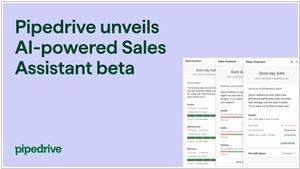
Pipedrive, the user-friendly and efficient sales CRM designed for small businesses, has unveiled its new AI-driven Sales Assistant, currently in beta. This innovative tool offers sales professionals insights into a deal's likelihood of success and suggestions for optimal next steps, significantly enhancing the chances of closing deals successfully. Companies that leverage the Sales Assistant experience a threefold increase in deal closures compared to those who don't. By incorporating AI capabilities into the Sales Assistant, Pipedrive aims to empower sales teams with targeted and actionable guidance, enabling them to further elevate their performance. The integration of AI into the Sales Assistant equips small businesses with a virtual assistant that utilizes cutting-edge technology to help them prioritize tasks, focus on key deals, and identify potential challenges in their sales pipeline.
2023. HubSpot unveils strategy to integrate AI across the platform
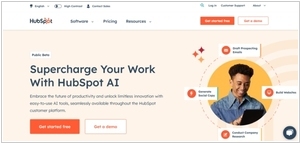
HubSpot, the marketing and CRM platform, has unveiled its comprehensive AI strategy known as HubSpot AI. While the incorporation of AI elements has been an ongoing effort for HubSpot and other enterprise SaaS vendors, the advent of technologies like ChatGPT has prompted HubSpot to adopt a more extensive approach while retaining earlier features. The CRM database stores valuable company data, enabling users to gain insights into customer profiles, encompassing basic information, purchase history, customer service interactions, and more. HubSpot AI encompasses a four-pronged strategy, starting with content assistants that assist users in generating various content types across the platform. Additionally, AI agents, currently in different development stages, aim to automate customer service tasks and answer queries. The third component, AI Insights, provides predictive analytics, such as identifying customers likely to churn or make a purchase, a capability integrated into the platform over time.
2020. Sales CRM Pipedrive becomes unicorn
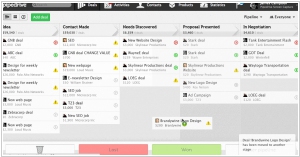
The latest European company to achieve unicorn status is Pipedrive, the sales CRM tool catering to small and medium-sized businesses. The company recently secured a majority investment from Vista Equity Partners, a U.S.-based private equity firm specializing in enterprise software. This investment has elevated Pipedrive's valuation to an impressive $1.5 billion. Pipedrive has always distinguished itself as sales software prioritizing the needs of salespeople, rather than just their managers. It was developed by sales professionals, for sales professionals. However, the platform has evolved into a comprehensive CRM solution that encompasses marketing functionalities as well. Pipedrive proudly boasts a user base of 95,000 companies relying on its software.
2020. HubSpot’s new end-to-end sales hub aims to simplify CRM for mid-market customers
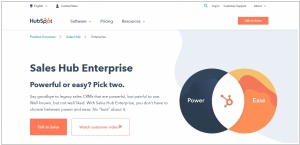
HubSpot, renowned for its role in shaping the concept of inbound marketing, has unveiled the HubSpot Sales Hub Enterprise. While the company has been providing a CRM tool for five years, which has successfully addressed the usability concerns of salespeople, the new offering aims to deliver a comprehensive approach that caters to the needs of not only sales professionals but also management and system administrators. HubSpot recognizes that larger players in the industry, such as Adobe, Salesforce, and SAP, typically acquire various components of the technology stack and integrate them into their solutions, or customers themselves piece together different elements. In contrast, HubSpot believes that developing a unified, integrated solution in-house will naturally result in a more user-friendly experience.
2020. HubSpot unveils new content management system for marketers
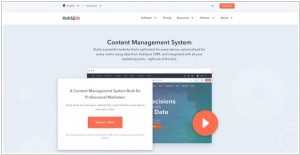
HubSpot, a renowned inbound marketing firm, has introduced a dedicated content management system (CMS) specifically designed to simplify the process of adding and updating content for marketing professionals. While content management has always been a fundamental aspect of HubSpot's offerings, this new CMS has been developed from scratch with marketers in mind. It provides developers with the flexibility to use their preferred programming languages while leveraging the modular structure of the HubSpot CMS. Simultaneously, the user-friendly interface empowers marketers to make frequent changes necessary for modern websites.
2018. HubSpot added customer service tools to its marketing platform
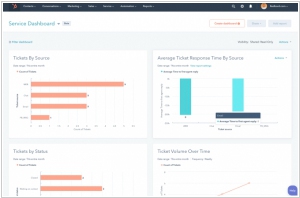
HubSpot is venturing beyond sales and marketing by officially introducing its Service Hub, a comprehensive solution for managing customer service. This expansion includes an all-in-one inbox for organizing all customer communications, a bot-builder to automate certain customer interactions, features for developing a company knowledge base (which can be utilized by the bot-builder), survey creation tools, and a dashboard for monitoring the performance of your service team. Service Hub is seamlessly integrated with HubSpot's existing products, enabling businesses to track customer interactions across sales, marketing, and support.
2017. HubSpot unveiled Conversations
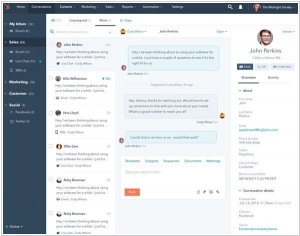
CRM, marketing, sales, and customer experience provider HubSpot has introduced a range of product updates, including notable integrations with Facebook for advertising purposes, Shopify for ecommerce functionalities, and the introduction of a new tool called "Conversations." The Conversations tool, facilitated by chatbots, consolidates customer messages into a single inbox, representing the evolution of HubSpot's live chat platform. This unified messaging system becomes crucial during significant transitions, such as the handoff from sales to support. Key features of Conversations include seamless integration with HubSpot CRM and the ability to create chatbots, leveraging the technology obtained from HubSpot's recent acquisition of the chatbot platform, Motion AI. These updates aim to enhance customer interactions and streamline communication processes within the HubSpot platform.
2017. Marketing platform HubSpot acquires AI startup Kemvi
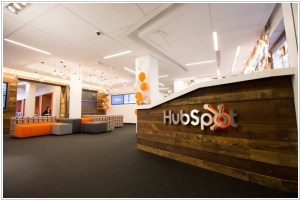
Inbound marketing and sales platform HubSpot has made an acquisition of Kemvi, a startup that utilizes artificial intelligence and machine learning to assist sales teams. A short while ago, Kemvi introduced DeepGraph, a product that examines public data to enable salespeople in identifying the optimal time (such as after a job transition or the release of an article) to connect with potential customers. Additionally, it takes proactive measures to verify leads. HubSpot was actively seeking innovative ways to incorporate AI technology into its platform as a means to combat competitors. The acquisition of Kemvi was especially attractive to HubSpot due to its ability to address a genuine requirement among salespeople.
2017. Pipedrive CRM gets $17M
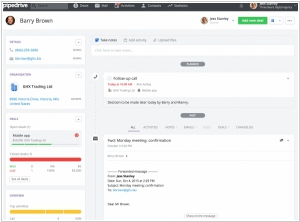
Pipedrive, a CRM platform specifically developed to enhance sales for SMBs, has successfully secured $17 million in Series B funding. The newly acquired capital will be allocated towards product and technological advancements, expanding the partner ecosystem, and global marketing efforts. Pipedrive boasts a customer base of over 30,000 small businesses from 140+ countries, positioning itself as a formidable competitor against well-established players in the SMB CRM space. Originally recognized for its sales software catering primarily to salespeople rather than managers, Pipedrive has evolved into a comprehensive CRM platform. It has achieved this by integrating with over 50 online software solutions and consistently adding new integrations each month. These integrations encompass a range of business tools including Google Apps, Trello, Zapier, Mailchimp, Yesware, and Pandadoc.
2015. HubSpot launches own CRM system
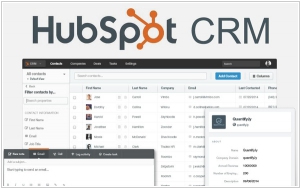
HubSpot, a renowned company recognized for its marketing tools, has officially launched its CRM product, moving it out of the beta phase. The CRM tool is available for free, while HubSpot's sales "acceleration" tool, Sidekick, is priced at $50 per seat per month. HubSpot describes the CRM tool as designed to assist sales representatives in minimizing the tedious aspects of data entry and interaction management. The tool automatically captures data from the sales process and organizes it in a chronological format. This strategy of providing free software to companies and subsequently upselling their IT departments has proven successful for software companies like Dropbox and Box. Although there are still costs associated with the sales process, having products integrated into more businesses helps reduce certain barriers.

